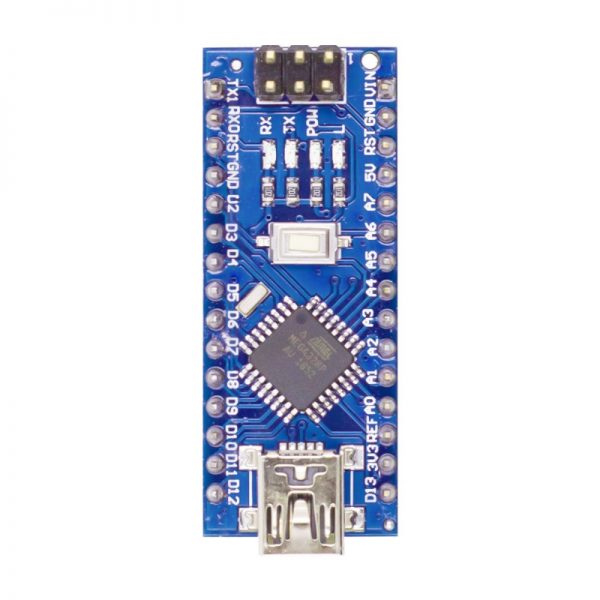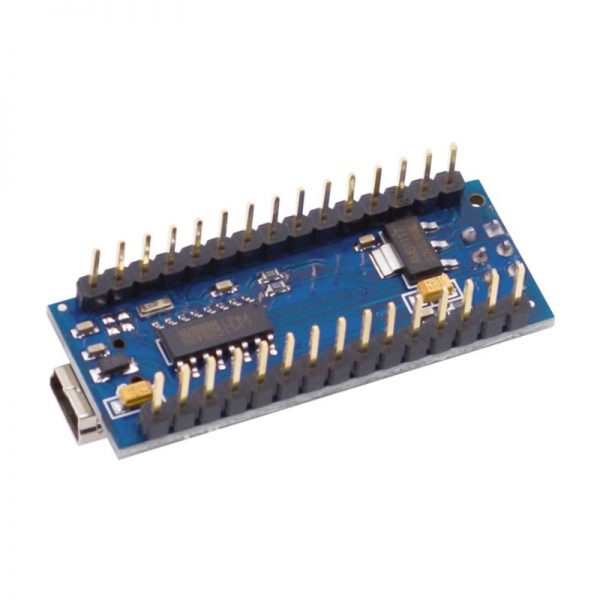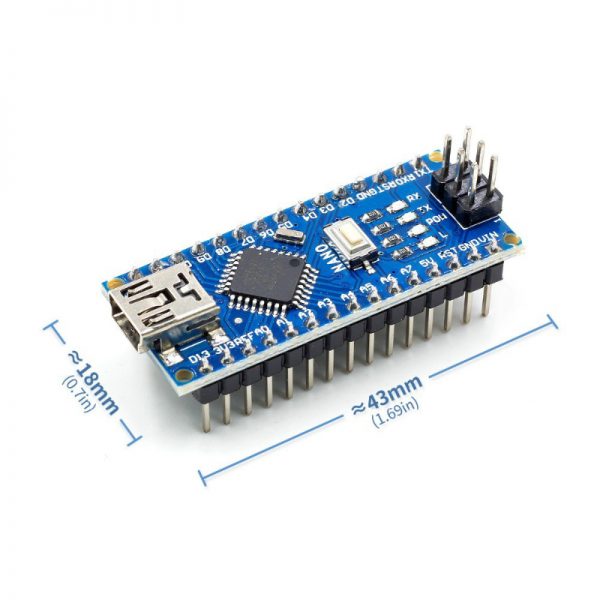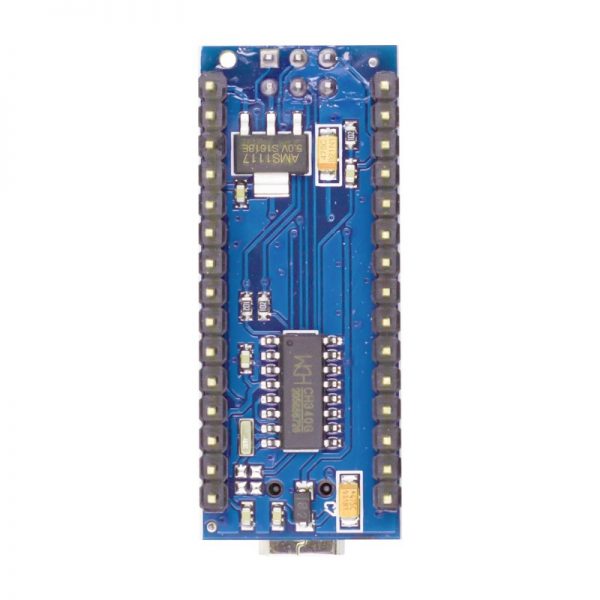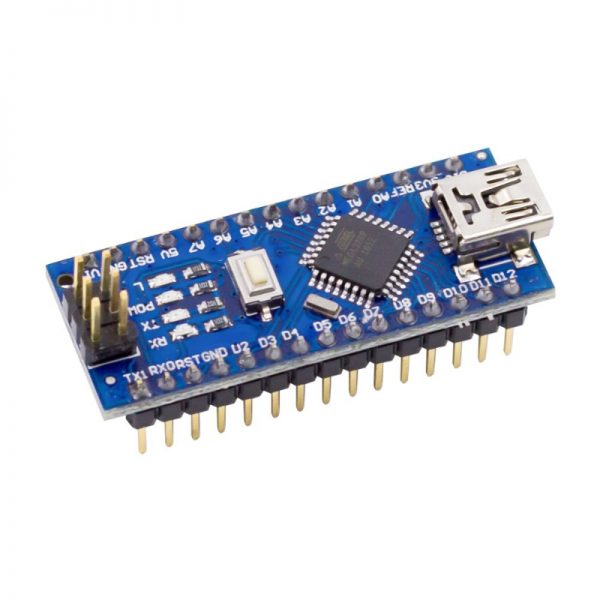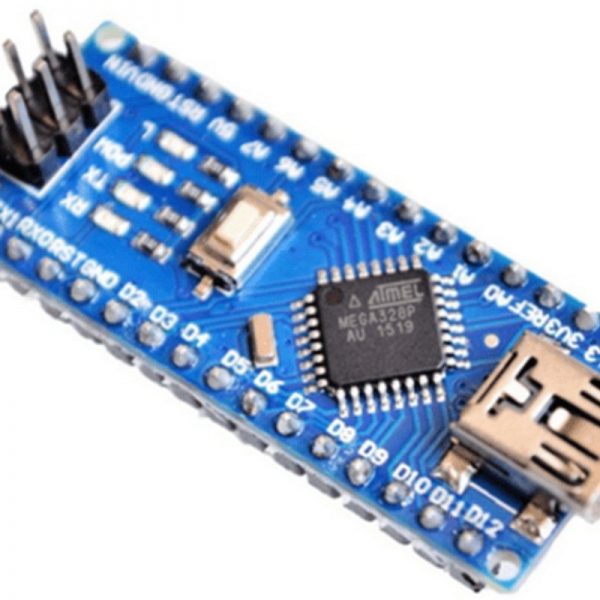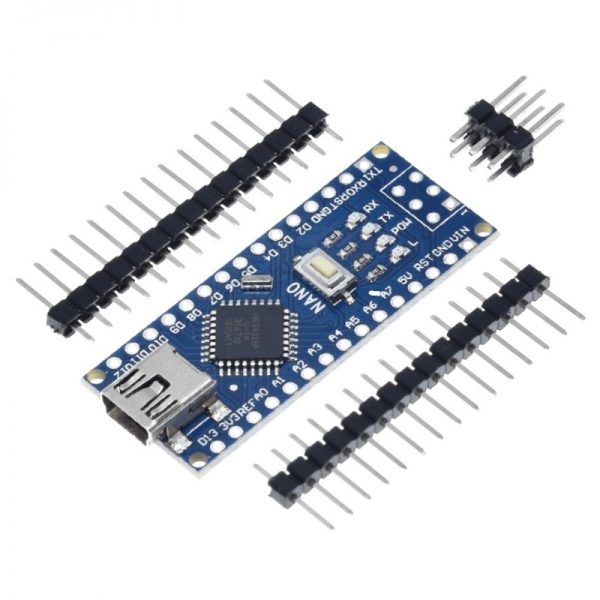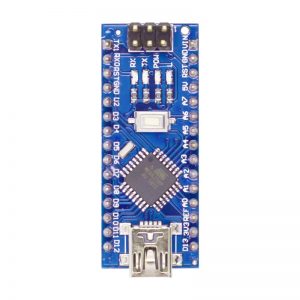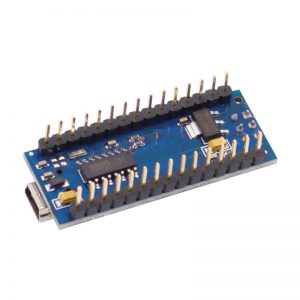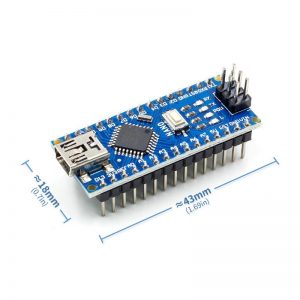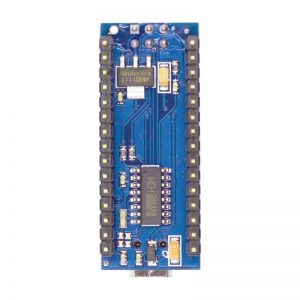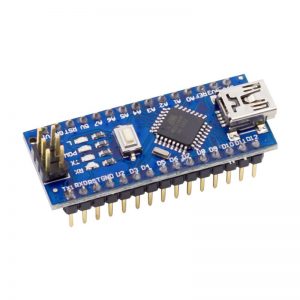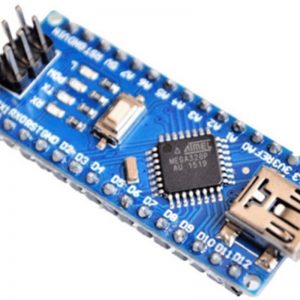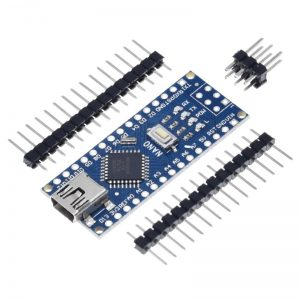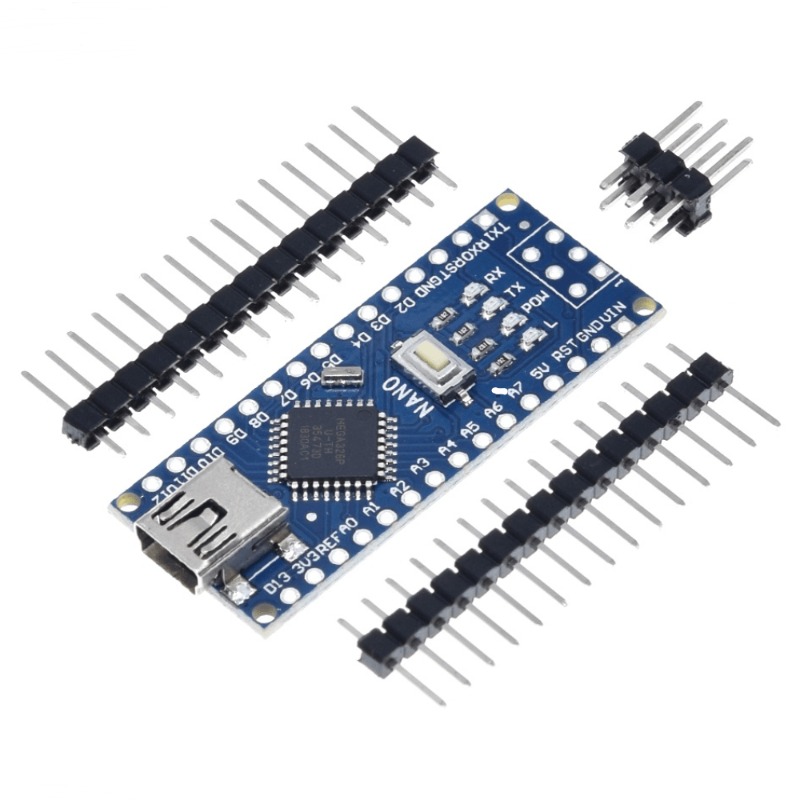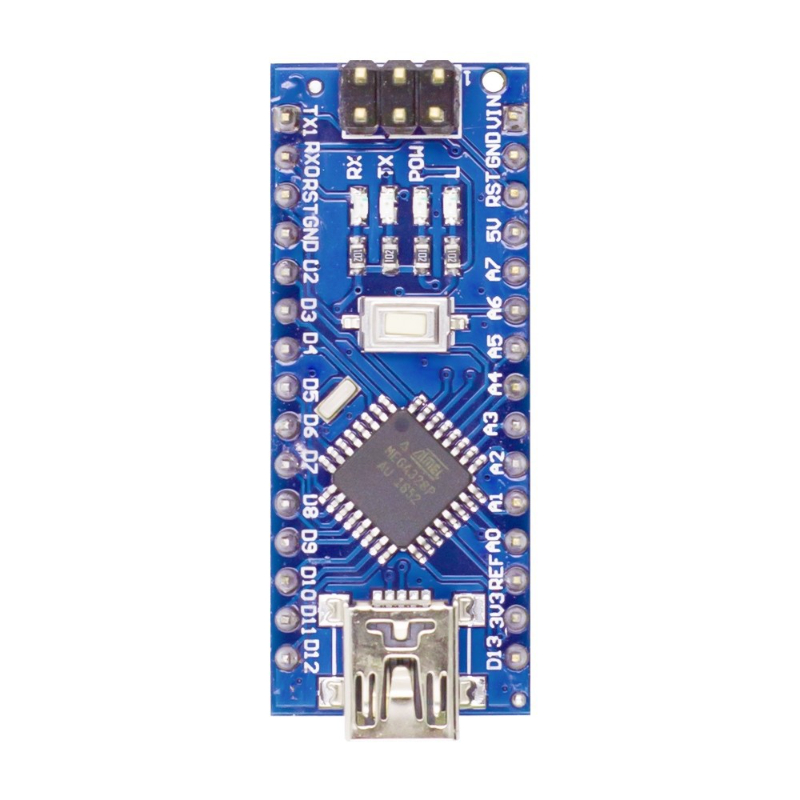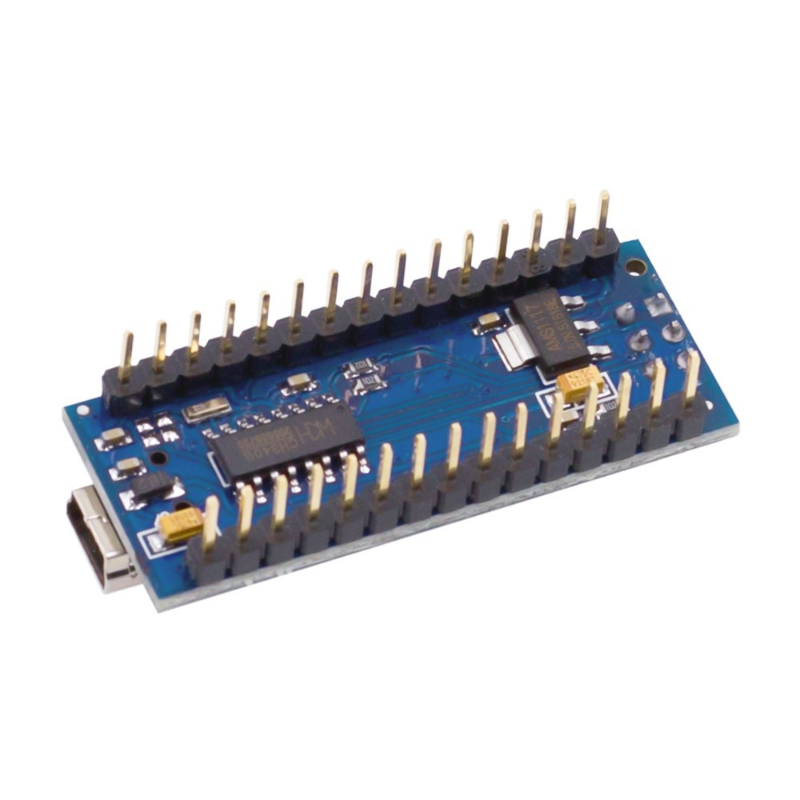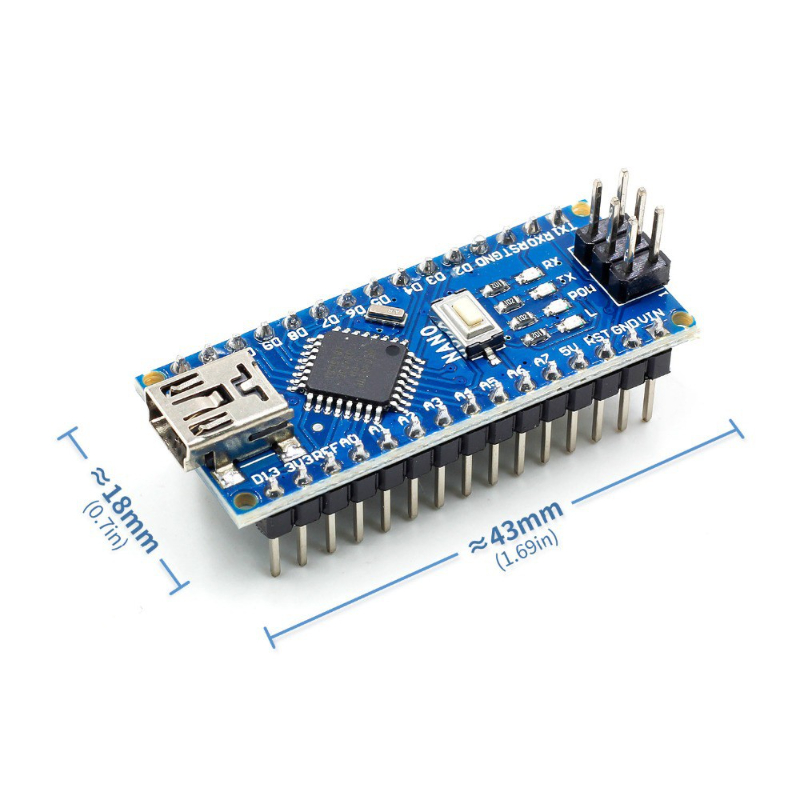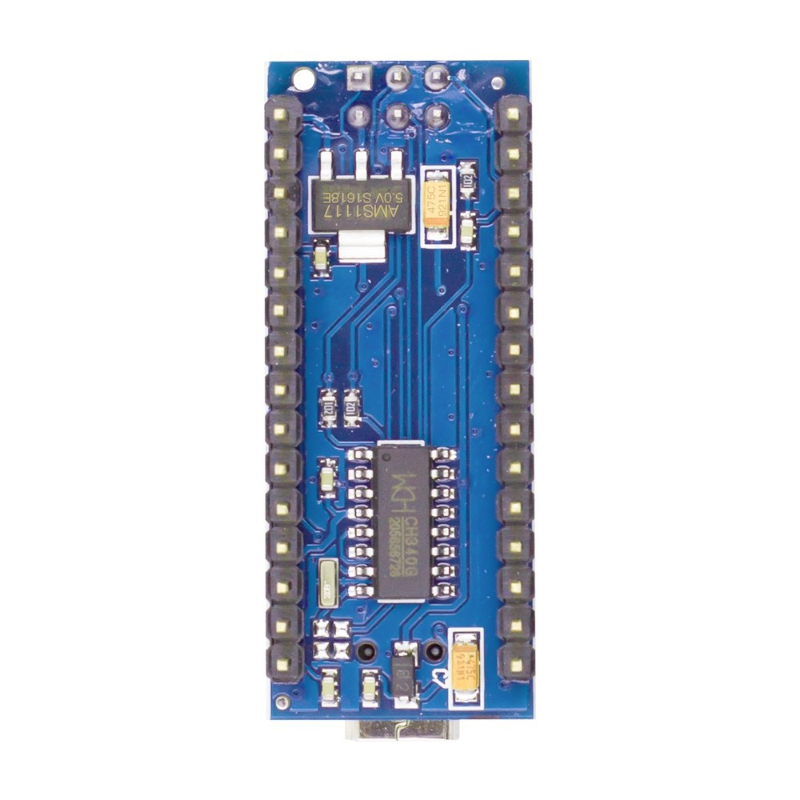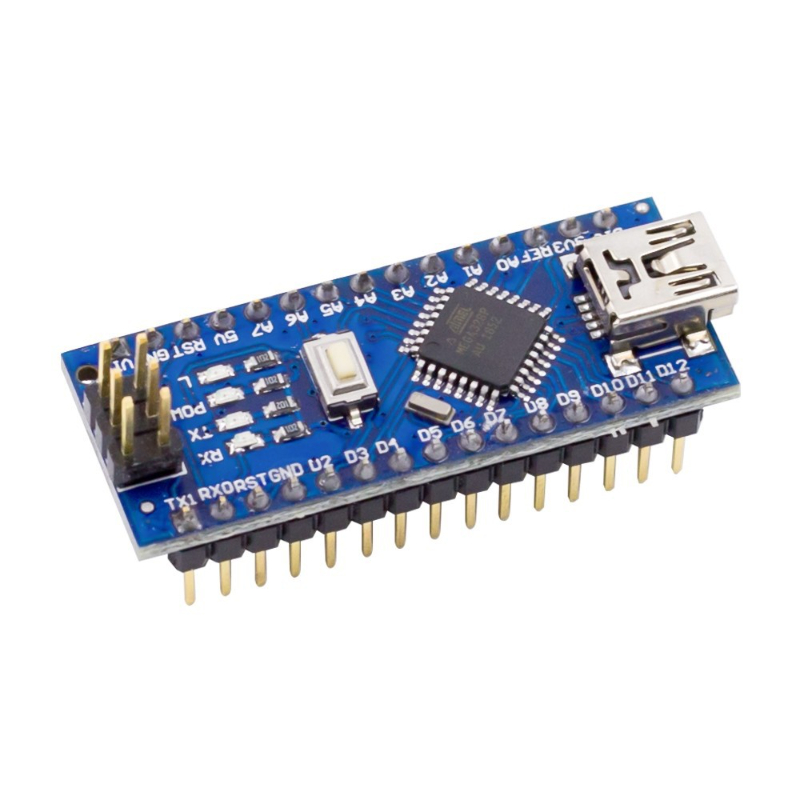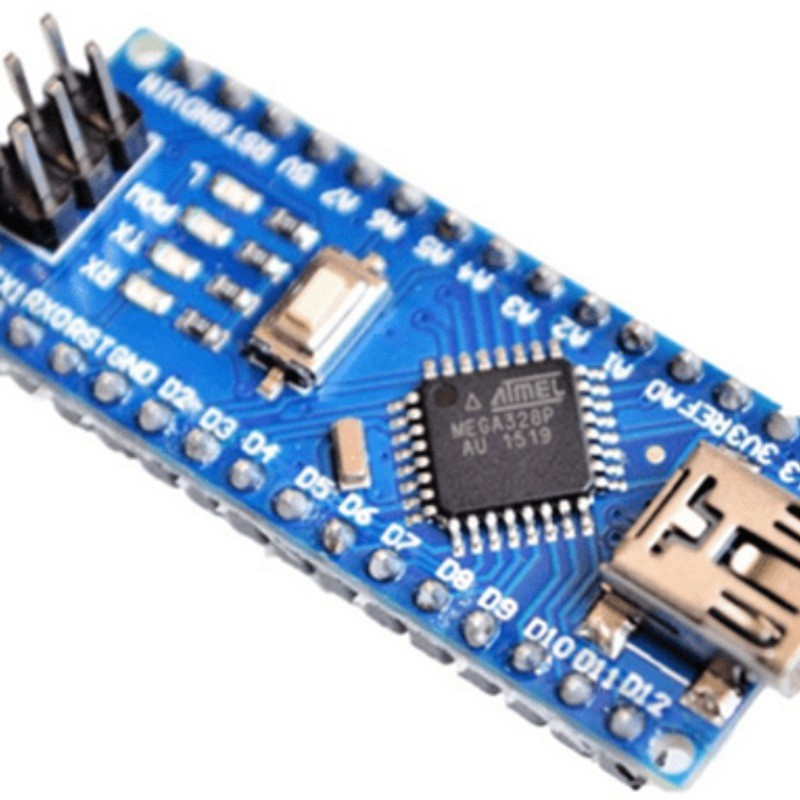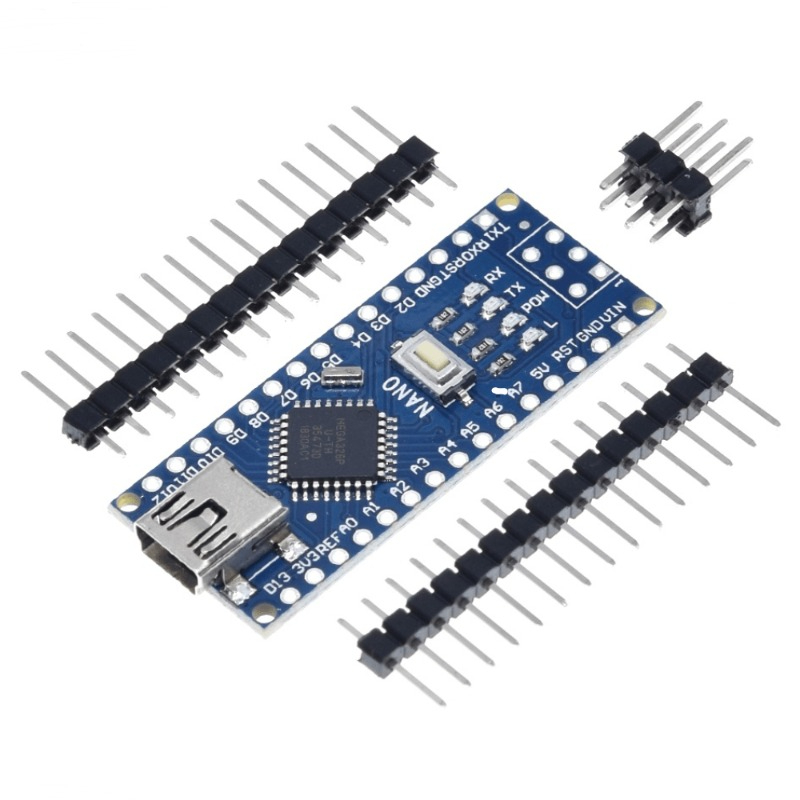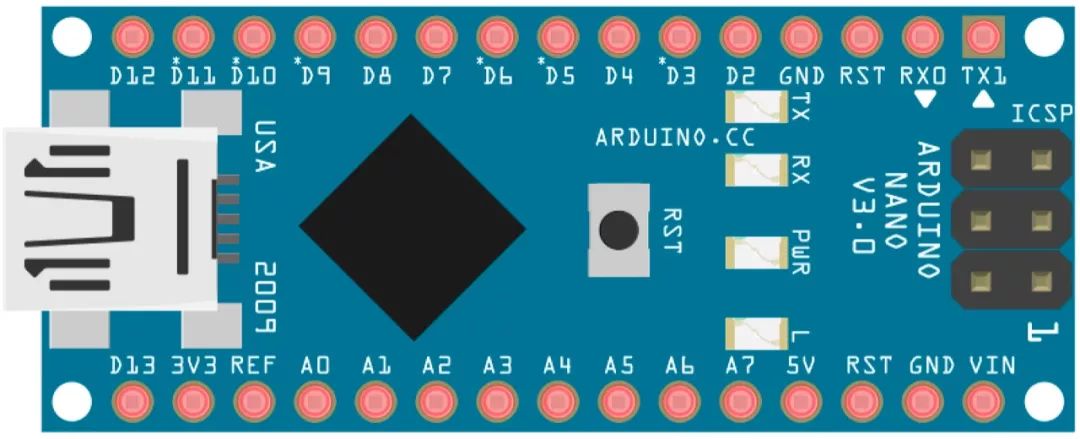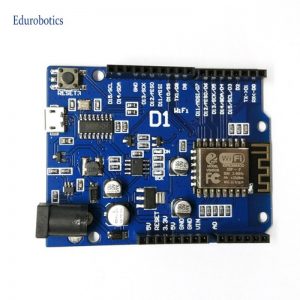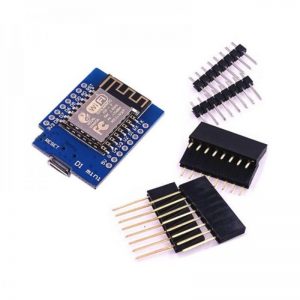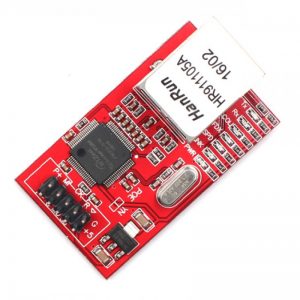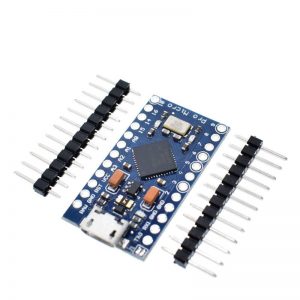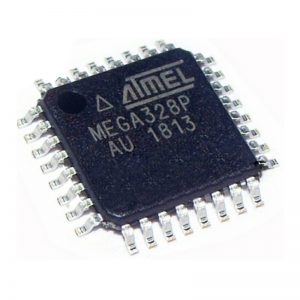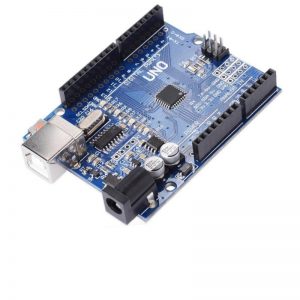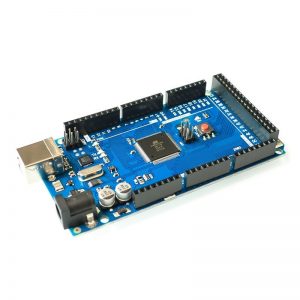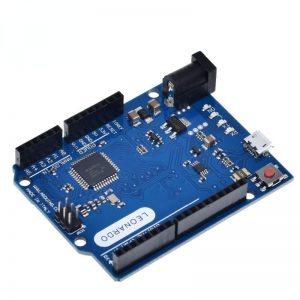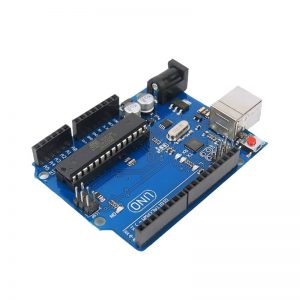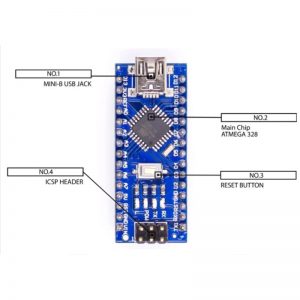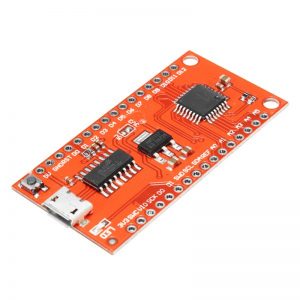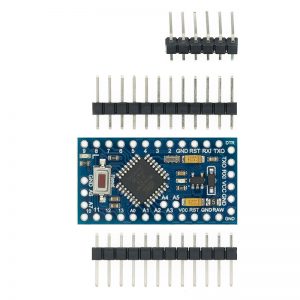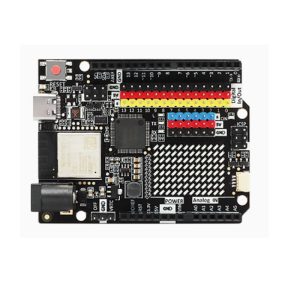Description
Arduino Nano CH340 has a lower cost USB-Serial Chip that makes it less in price than Arduino Nano with FTDI USB-Serial Chip used on older versions of Arduino Nano.
The Arduino Nano is a small, complete, and breadboard-friendly board based on the ATmega328 (Arduino Nano 3.x). It has more or less the same functionality of the Arduino Duemilanove, but in a different package. It lacks only a DC power jack, and works with a Mini-B USB cable instead of a standard one.
Comparison with Arduino UNO:
- Digital IOs: Arduino Nano and Arduino UNO have exactly same number of Digital IOs (i.e. 14)
- PWM Channels: Arduino Nano and Arduino UNO have exactly same numbers of PWM Channels (i.e. 6)
- Clock: Arduino Nano and Arduino UNO have exactly same clock frequency (16.000 MHZ)
- Flash Memory: Arduino Nano and Arduino UNO have exactly same amount of flash Memory (i.e. 32KB)
- Data Memory: Arduino Nano and Arduino UNO have exactly same amount of Data Memory / RAM (i.e. 2KB)
- EEPROM Memory: Arduino Nano and Arduino UNO have exactly same amount of EEPROM Memory / RAM (i.e. 1KB)
Features
- Automatic reset during program download
- Power OK blue LED on the bottom
- Green (TX), red (RX) and orange (L) LED
- +5V to AREF jumper
- Auto sensing/switching power input
- Small mini-B USB for programming and serial monitor (cable not included)
- ICSP header for direct program download
- Power OK blue LED on the bottom
- Standard 0.1” spacing DIP (breadboard friendly)
- Manual reset switch
Technical Specifications
| Microcontroller | Atmel ATmega328 |
| Operating Voltage (logic level) | 5 V |
| Input Voltage (recommended) | 7-12 V |
| Input Voltage (limits) | 6-20 V |
| Digital I/O Pins | 14 (of which 6 provide PWM output) |
| Analog Input Pins | 8 |
| DC Current per I/O Pin | 40 mA |
| Flash Memory | 32 KB (ATmega328) of which 2 KB used by bootloader |
| SRAM | 2 KB (ATmega328) |
| EEPROM | 1 KB (ATmega328) |
| Clock Speed | 16 MHz |
| Dimensions | 0.73″ x 1.70″ |
